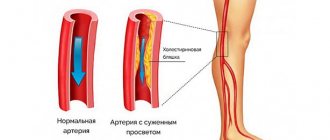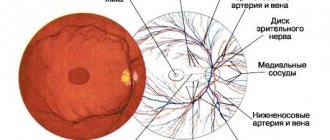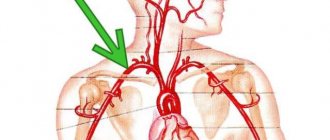Varicose veins are often perceived as a disease of the lower extremities, however, the pathology can affect any veins in the human body.
The venous system in the lower extremities suffers more often because it is exposed to increased pressure - physical activity, long walking, sedentary lifestyle. What can be said about varicose veins on the hands, does it happen? Yes, varicose veins happen on the hands, but not as rarely as it might seem.
Pathological expansion of veins in the arms is not as common as in the legs. However, the majority of patients with this diagnosis are women under 55 years of age.
Is it possible to have varicose veins on the hands?
Varicose veins of the upper extremities are much less common than on the legs, but they exist. The risk group consists mainly of women. Men can also get the disease, but are less likely to get it.
The hands of the fair sex are weak by nature. Low blood pressure in the arms causes venous congestion. Vascular blockage occurs. The veins increase in size, causing unbearable pain.
The appearance of hands in this condition leaves much to be desired. In addition to physical activity, there are a number of other factors that cause the disease.
Complications of varicose veins
Varicose veins are visible expansion of superficial veins. This is not only a cosmetic problem that worsens the appearance of the hands, but also a disease that can cause a number of serious complications. It is worth noting that some of them are potentially dangerous to the patient’s health:
- Thrombophlebitis. The pathology is an inflammation of the superficial veins, accompanied by blood stagnation and the formation of blood clots. At this stage, it is important to resort to the most effective treatment and prevent the development of deep vein thrombosis.
- Trophic ulcers. It is generally accepted that such damage to the skin occurs only with varicose veins of the legs, however, this is not so. Ulcers can have both arterial and venous causes; however, venous ulcers are more common. The fact is that all of the above-mentioned diseases of the venous system tend to have a long course, which is manifested by a local violation of tissue viability. Even minor damage to the epidermis can develop into chronic ulcers that are difficult to treat.
- Phlebitis. Of all the complications, it can be called the least dangerous, however, requiring immediate intervention from a doctor. The condition is characterized by inflammation of the vein walls and is the most common occurrence of varicose veins. Unlike thrombophlebitis, it is not accompanied by the formation of a blood clot. The first symptom of a complication is a dull aching pain, and a lump can be felt along the affected vein. On palpation, the pain intensifies, and pain is observed in the area adjacent to the seal. Also in this place you can see redness of the skin, which indicates the rapid progression of the pathological process.
To prevent the development of such complications, you should seek medical help in a timely manner, without wasting time on ineffective self-medication.
May be of interest:
|
Causes and symptoms
Varicose veins of the upper extremities appear for several reasons:
- practicing strength sports that put stress on the muscles of the shoulder girdle, for example, bodybuilding;
- hard physical work;
- hormonal changes in women;
- side effect from taking contraceptives;
- natural weakness of veins and blood vessels;
- vein injuries after injections;
- the occurrence of thrombosis after removal of oncological formations;
- bad habits.
Vein disease in the arms cannot go unnoticed. The severe pain becomes more intense every day. The patient has difficulty moving the fingers of the upper limbs.
The main symptoms of varicose veins on the hands:
- the hands swell due to enlarged veins;
- the vessels take on a bright blue hue;
- the veins become tortuous;
- nodules appear along the vein;
- possible numbness of the hands;
- feeling of "twisting of arms";
- increased pain in the limbs when the weather changes.
If such signs appear, urgent assistance from a specialist is necessary.
Causes
There are several reasons for this phenomenon and factors that increase the risk of phlebitis.
The main reason for the development of phlebitis is intravenous injections, which damage the vein wall.
Frequent injections, injuries to the venous wall, prolonged wearing of a catheter and unqualified actions of medical staff aggravate the process, causing a risk of infection.
Other, no less common, reasons include:
- varicose veins of the arms and venous insufficiency;
- hormonal changes - pregnancy, menopause, endocrine diseases;
- chemical burns to veins when taking blood or administering a drug;
- physical passivity or, conversely, excessive activity, such as strength training;
- systemic blood diseases;
- venostasis of the upper extremities.
Factors that increase the risk of developing the disease include: excess body weight, bad habits, exposure to ultraviolet rays.
It often develops in people who inject narcotic drugs into the cubital veins. In addition to the fact that these actions threaten human life, trauma to the venous wall occurs:
- vessels become hard;
- injection sites become inflamed;
- infection occurs;
- the composition of the blood is disrupted and its density changes;
- A burn from narcotic drugs cannot be ruled out.
It should be noted that not every injection causes inflammation in a person. The disease is based on an immunological factor, which can at some point fail and lead to such consequences.
Diagnostics
Varicose veins of the hands are recognized immediately. If the veins begin to enlarge, you should immediately consult a phlebologist and vascular surgeon. Timely diagnosis will help avoid complications in the future.
Diagnosis sequence:
- At the first stage, the doctor performs a visual examination.
- The patient is interviewed. It turns out whether he is physically straining himself, whether he has any bad habits, and the nature of the pain.
- The patient undergoes general tests.
- The characteristics of blood flow are determined through functional tests.
- Doppler ultrasound is prescribed to identify areas of narrowing and blockage of blood vessels.
- If the picture is not entirely clear, an ultrasound scan is performed. This research method allows for a more accurate diagnosis.
- Obtaining a more detailed venous pattern is possible using magnetic resonance venography.
Based on the data received, the specialist will make a diagnosis and find out the cause of the disease.
Veins protruding on the legs: symptoms and treatment
Ignoring the external symptoms of bulging veins can lead to very adverse consequences. Therefore, if the veins in your legs begin to protrude, you should immediately consult a doctor to undergo an examination and determine the cause. If the veins in the legs protrude due to physiological characteristics or as a response to a temporary irritant, then the doctor will certainly tell you about it. He will recommend how to avoid the irritant and tell you how to eliminate the symptoms that have arisen. If the specialist determines that the protruding veins on the patient’s legs are a consequence of developing varicose veins, he will prescribe an appropriate treatment regimen.
What treatment methods do specialists use when the veins in the legs protrude due to varicose veins? Is it possible to carry out treatment with folk remedies? Are there any safe treatments during pregnancy? Read the answers to these and other questions further in our article.
Treatment of varicose veins is possible using various methods. The choice of the most suitable methods for the patient is always made by the doctor based on the examination results.
!
According to VTsIOM, a third of the Russian population does not go to doctors.
Self-diagnosis and self-medication will not only take up time and money, but may well contribute to the development of the disease, which will become more complicated. Only a doctor can objectively assess the situation and take into account the beneficial and side effects of the chosen treatment method.
When laboratory tests and an ultrasound report indicate that all indicators are normal, and the studied vascular parameters and the type of blood flow correspond to acceptable values, no additional diagnostics are required. Not only MRI and duplex scanning of blood vessels, but also other diagnostic methods are prescribed if necessary to clarify the preliminary diagnosis. If a vascular ultrasound showed that at the moment there is no significant reason for concern, this means that varicose veins were detected at the initial stage.
Veins on the legs protrude, reasons
In addition to protruding vessels, the clinical picture of varicose veins at the first stage may include the following manifestations:
- a feeling of heaviness in the legs, as a sign of rapid fatigue;
- vascular pattern in the form of meshes, stars;
- pain in the calves, associated with a feeling of fullness;
- slight swelling in the ankle area at the end of the day, which goes away after rest;
- cyanosis of the skin and the appearance of age spots.
In this case, the doctor will use conservative treatment methods. The first thing he will recommend is to make adjustments to your lifestyle:
- have a correct daily routine with an appropriate distribution of time for sleep, rest and work;
- monitor your own emotional background - live in harmony with yourself and be less nervous;
- lead an active lifestyle, play sports, walk in the fresh air, etc.;
- eat a balanced diet;
- try to avoid hot rooms, visiting baths and saunas.
Expert opinion
To reduce the symptoms of varicose veins and prevent the disease from progressing, your doctor may prescribe wearing compression stockings. It normalizes the functioning of the circulatory system in the lower extremities. Compression garments provide precise calculated pressure for prevention and treatment. Prophylactic knitwear has the lowest degree of compression and can be purchased independently. Therapeutic knitwear has several degrees of compression and is selected based on the individual parameters of the limb. The choice of products will be made by a specialist based on the location of venous disorders and the severity of the patient’s condition.
Vascular surgeon, phlebologist
Osipova Ekaterina Yakovlevna
Anti-varicose jersey for diseases of the veins on the legs
As a rule, along with wearing compression hosiery, the use of external medications is prescribed for the prevention and treatment of varicose veins. In the initial stages of the disease, it is effective to use products for the lower extremities from the NORMAVEN® line of medical cosmetics: cream and spray tonic. Both products are made from natural ingredients. "NORMAVEN®" foot cream is applied to the skin 1-2 times a day with massaging movements. The cream is absolutely safe when used during pregnancy, which is confirmed by clinical trials. In addition, it will not damage the fibers of compression garments, so application of the product is possible not only after removing the jersey, but also before putting it on. "NORMAVEN®" foot tonic spray is ideal for long trips and for use at work under prolonged static loads. It has an immediate venotonic effect, restoring lightness and comfort to the legs. Spray 1-2 times a day from a distance of about 15 cm until the skin feels moisturized.
At home, you can do self-massage of your feet, take a contrast shower, make warm foot baths with sea salt, essential oils and herbal decoctions. When veins protrude on the legs, infusions of medicinal plants (in accordance with folk recipes) can be taken both internally and as rubs. But such treatment can be carried out only after consultation with a doctor. It is important to understand that alternative medicine should not replace the main therapeutic regimen.
Expert opinion
The doctor may also prescribe a number of gymnastic exercises, which, when performed on a regular basis, can significantly improve the patient’s condition. It is enough to perform a similar set of exercises every day for 10-15 minutes to tone the blood vessels.
Vascular surgeon, phlebologist
Osipova Ekaterina Yakovlevna
If the symptoms are pronounced, the doctor may prescribe medications to be taken orally. They are usually taken in courses during periods of exacerbation. The most popular are drugs based on heparin, troxerutin and diosmin.
Not all of the above methods will be effective for treating varicose veins. Despite the comprehensive approach to treating the disease and the use of conservative drug therapy methods, doctors often have to turn to radical methods, such as minimally invasive procedures and surgeries.
Treatment of affected blood vessels in the legs
Minimally invasive methods for removing diseased veins include:
Sclerotherapy
During this painless procedure, the doctor injects a sclerosing drug or a cocktail of drugs into the vein that removes blood from the affected vein. The vessel “sticks together” and is excluded from the bloodstream;
Laser coagulation
The vein is “sealed” with laser energy through a light guide inserted into it. To perform this procedure, not only a laser unit is required, but also an ultrasound machine;
Treatment methods
Varicose veins can be cured using traditional methods and folk recipes. The best option is to compare both methods, but only after consultation with your doctor.
Traditional therapy
Treatment is prescribed depending on the severity of the disease.
- Drug treatment. External and internal medications are prescribed to eliminate vascular bloating, such as vitamin P, lily of the valley extract, mistletoe, leoton gel.
- Anti-varicose patches help reduce swelling of the hand and relieve inflammation.
- Laser therapy. During the procedure, a special substance, a sclerosant, is injected into a vein. Under the influence of a laser beam aimed at the painful area, the walls of the veins are connected to each other. The veins decrease in size and then disappear altogether.
- Ultrasonic radiation. A physiotherapy procedure is prescribed to relieve pain.
- Therapeutic gymnastics and massage. It is necessary to periodically develop the hands to increase the tone of the venous walls.
- Surgical intervention. This treatment method is prescribed in case of advanced disease. The inflamed subcutaneous veins are completely removed. Sometimes plastic surgery is required.
Recently, the use of alternative medicine has been considered effective. Varicose veins of the hands are treated using hirudotherapy. This method involves influencing inflamed veins using leech saliva. As a result, the walls of blood vessels become elastic and thicken. The blood thins, which prevents the formation of blood clots.
The effectiveness of treatment will depend on the patient's lifestyle. In addition to taking medications and performing therapeutic procedures, you must follow some recommendations:
- First , let's switch to proper nutrition. Fatty and heavy foods provoke the development of the disease. During treatment, it is recommended to consume more fruits and vegetables, mainly legumes and dried fruits. Among vegetable oils, we will focus on olive oil. It is better to avoid alcohol altogether.
- Secondly , you need to use a compression sleeve. It is worn on the hands during physical activity, which reduces pressure on the hand and shoulder joint.
- Thirdly , we harden the limbs with a contrast shower.
If heavy physical exertion on your hands cannot be avoided in everyday life, you need to learn how to maintain a work-rest regime.
Folk remedies
Treatment of varicose veins with home methods should be considered as additional therapy.
Let's look at a few recipes:
- Let's prepare an ointment for external use. Heat up some butter. Add chopped garlic there and put it in the refrigerator for 24 hours. Apply to the swollen areas of the veins and cover with gauze. Remove the bandage after 10 hours.
- Healing cream. Melt the pork fat in a water bath. Add chestnut fruits ground in a meat grinder to it in a ratio of approximately 1:1. Apply the cream to the diseased veins. Rub lightly into the skin. Don't press too hard.
- Thin pieces of green tomatoes are applied to the inflamed areas of the veins and wrapped in gauze. It is better to apply the bandage at night.
- Place flowers and wormwood leaves into a blender. Grind until pureed. Mix with curdled milk (kefir) in a 1:1 ratio. We have created a cream-compress, which is used to soak gauze laid in several layers. Then apply the cloth to your hand for 30 minutes. Next, remove the remaining product and lubricate the affected area with sour cream.
- Horse chestnut is an indispensable remedy for varicose veins. It is sold in pharmacies or prepared at home. It is necessary to fill the crushed chestnut fruits with alcohol to the top. Let the product infuse for 2 weeks. Take 20 drops orally for a week.
- In a difficult situation, when ulcers and bumps appear on your hands, laundry soap will come to the rescue. 50 g of vinegar is mixed with a worn-out bar of soap. Apply the resulting product to your hands twice a day for 30 minutes. Then wash off the remaining medicine with warm water.
- Let's prepare a tonic to strengthen blood vessels. Dissolve 1 g of nutmeg flour in boiling water. As soon as you feel thirsty, drink a glass instead of water. There are no restrictions on the consumption of the product.
The effectiveness of home recipes depends on the degree of development of the disease. Amateur activity in this case is not encouraged. To avoid serious consequences, consult your doctor.
Method of treatment
It is impossible to correctly treat phlebitis without the correct choice of pharmacological agents. As a rule, for this pathology, drugs belonging to the following groups are used:
- Venotonic and affecting the rheological characteristics of the blood, as well as the condition of the vascular walls. This group includes drugs such as Troxevasin, Trental, Escusan. Their price is quite reasonable, so almost everyone can purchase such drugs.
- Anti-inflammatory drugs that help reduce or relieve pain, as well as relieve inflammation. Any NSAID can be used as such a drug (for example, Ibuprofen, Meloxicam, Diclofenac, etc.).
- Antibacterial drugs. Such medications include: sulfonamides, cephalosporins, tetracyclines, macrolides and others. They are prescribed only if phlebitis on the arm is due to infection.
Also, in hospital settings, medications are actively used that thin the blood and prevent the formation of clots. This is done under strict control of blood counts (for example, “Curantil No. 25”).
Troxevasin, Meloxicam, Trental, Diclofenac and Escusan, the price of which does not exceed 500-600 rubles, should be used only as prescribed by a phlebologist. It should also be noted that the treatment of the disease in question is a rather lengthy process.
After the end of drug therapy, discomfort in the affected area of the arm (vein), as well as swelling in the surrounding area and redness, can persist for a very long time (almost up to several weeks).
Objective symptoms of improvement in the patient’s condition are a decrease in the intensity of pain and the severity of redness, as well as normalization of the patient’s body temperature.
Possible complications
The consequences of untimely diagnosis and treatment of varicose veins of the hands will be the most severe. Complications due to this disease manifest themselves in the form of serious illnesses:
- Thrombophlebitis. The disease is associated with stagnation of blood over a long period of time. As a result, the lumen of the vessels narrows, which provokes the formation of blood clots. Severe pain occurs and the hands swell. You can’t do this without the help of doctors.
- Trophic ulcer. The soft tissues of the upper extremities need constant supply of oxygen and vitamins, the deficiency of which leads to the appearance of ulcers. Long-term exposure to toxins on the surface of the hands is also the cause of the disease. Getting rid of a trophic ulcer is not easy. Long-term treatment is required. In some cases, the disease returns again.
- Rupture of varicose veins. During the course of varicose veins of the arms, nodules are formed that can rupture at the slightest load on the arm. Heavy bleeding occurs, which is almost impossible to stop at home.
Each case is individual and requires careful examination and long-term treatment.
Treatment
Treatment tactics are selected by the doctor depending on the cause and stage of the disease. This is usually conservative treatment. The basic rule is that therapy must be comprehensive, while providing for the causes and mechanisms of development of the pathology.
Conservative treatment.
Any conservative treatment begins with a regimen and proper nutrition. Normalizing the work and rest regime will improve the outflow of blood from the upper extremities. To do this, it is enough to alternate work with rest, during which you need to raise your arms up.
Gymnastics for hands and fingers will help avoid stagnation of venous blood and have a beneficial effect on the condition of the vascular wall. Regular circular rotation of the hands, squeezing and unclenching of the fingers can help in the treatment of varicose veins in the hands. It is also useful to take a contrast shower, which has a beneficial effect on the walls of blood vessels, “training” them and strengthening them.
It is necessary to avoid overheating of blood vessels and excessive exposure to ultraviolet radiation. Avoiding baths, saunas, visiting the beach and solarium, and wearing gloves in sunny weather will prevent swelling, swelling of veins and worsening the problem.
Meals should be light, but rich in vitamins. It is worth excluding from the diet foods rich in cholesterol (fatty, salty, smoked, spicy foods, confectionery and bakery products).
The diet should be filled with vegetables, fruits, natural juices, fish and seafood, lean meats, steamed.
Particular attention should be paid to:
- Legumes (compensate for the lack of protein in the body);
- Dried fruits (rich in potassium, which normalizes the functioning of the cardiovascular system);
- Olive oil (rich in vitamin E, which is good for blood vessels).
The use of compression garments (sleeves, gloves, mitts) is one of the most important conditions for the treatment of varicose veins on the hands. Worn for physical work, exercise, and sports. They support the affected veins, while preventing the disease from progressing.
Prevention
Varicose veins of the hands can be avoided by learning a few rules:
- maximum reduction of physical stress on the hands;
- when doing strength exercises, we use compression garments;
- weight control, preventing excessive weight gain;
- rejection of bad habits;
- do not abuse fried and fatty foods;
- use of personal protective equipment when exposed to repellents;
- hand skin care.
At home, you can do gymnastics by raising your arms up and shaking them. Then we rub the limbs using a massager. About this in a short video:
Varicose veins of the hands are a rare disease, but very dangerous. There is no point in starting the disease. Varicose veins in a complicated condition are accompanied by severe pain. The external condition of the upper limbs will affect the psychological state, especially in women. The disease requires long-term treatment. If you experience the slightest symptoms, you should immediately consult a doctor.
Diagnostic methods
Treatment of phlebitis is required only after an accurate diagnosis has been made. A phlebologist helps determine an inflammatory disorder on the hand. The doctor examines the injured upper limb and finds out the symptoms that are bothering the patient. Post-injection phlebitis is confirmed using the following diagnostic methods:
- ultrasound examination of the hand using Doppler,
- duplex scanning,
- transumbilical portohepatography.
If it is impossible to diagnose phlebitis in the arm area using the main diagnostic methods, magnetic resonance imaging is performed.
Blue veins. Treatment of blue veins
» Symptoms » Symptoms of varicose veins » Blue veins
- About blue veins
- Causes of Blue Veins
- Symptoms of varicose veins
- Treatment of blue veins
Knotty blue veins that bulge on the legs are not a pleasant sight, but, unfortunately, they are common.
Every third person experiences varicose veins (varicose veins) during their lifetime, and women experience this five times more often than men. Women with varicose blue veins hate their legs and expose them very rarely and reluctantly . If you look at the skin, you can easily see veins.
In certain places, veins of normal diameter are visible, and in some places they are dilated and dark blue in color. This is explained simply.
The skin absorbs about half of all red wavelengths and returns the rest, while it absorbs only one third of blue wavelengths. This is why veins are blue. But if the blue veins are bulging, have an enlarged and inflamed appearance , then you should immediately consult a phlebologist, as these are obvious symptoms of varicose veins!
Causes of blue veins
The veins of the lower extremities are very vulnerable, since they bear the heaviest load. The most common disease that signals bulging and blue veins is varicose veins. Blue dilated veins with varicose veins are a sign of a violation of natural blood circulation .
Also, the cause of blue veins is poor valve function. Blood begins to accumulate in the veins, in which pressure increases, forming nodes. This process takes certain years before blue veins in varicose veins become a risk factor.
Externally, blue veins with varicose veins appear as highly swollen, blued (less often reddened) sections of blood vessels. Varicose blue veins greatly increase in size, losing their elasticity .
If this disease is not treated, trophic ulcers may appear on the skin.
Symptoms of varicose veins
The main symptoms of varicose veins:
It is very important to know that in most cases, varicose veins are asymptomatic.
Women during pregnancy are especially susceptible to varicose veins and the appearance of dilated blue veins, due to increased body weight and pressure on the legs, which is caused by the development of the fetus. The tendency to varicose veins and the formation of dilated blue veins can be inherited .
Treatment of blue veins
Our center for modern phlebology has extensive experience in endovenous laser treatment for varicose veins .
The latest generation laser devices and modern radial light guides make it possible to achieve complete success in the treatment of blue veins without pain and incisions.
The treatment method should be selected only by the attending physician, based on the characteristics of the body, the presence of concomitant diseases and the symptoms of the disease themselves.
In our center for modern phlebology, blue veins with varicose veins are treated with all existing methods: surgery, endovasal laser coagulation and sclerotherapy.
Treatment of blue veins by surgical intervention is by far the most effective.
It is prescribed when there are advanced forms of the disease, as well as when complications occur, for example, thrombophlebitis or bleeding.
The goals of surgery in the treatment of blue veins:
- Eliminate the affected veins with all tributaries;
- Elimination of veins with valvular insufficiency;
- Elimination of the trunks of the affected veins.
After surgical operations, it is necessary to wear special compression garments, which will help stop the pathological blood flow through the veins.
The endovasal laser coagulation method is considered the most innovative in the treatment of blue veins with varicose veins. Under the influence of this technique, intravascular closure of the lumen of the affected veins occurs without their removal.
Treatment should be carried out in the phlebological operating room during continuous ultrasound scanning of the veins. Laser radiation affects the vein so that it thickens and resolves.
Phlebologists at our center for modern phlebology are fluent in this method of treating blue veins.
Sclerotherapy is a method of treating blue veins for varicose veins , which is based on gluing the vein after exposing the vein wall to a special drug.
During treatment, a sclerosing agent is injected and compression garments are worn. After this, the process of obliteration or gluing of the walls of the affected veins without thrombosis begins.
This method does not require anesthesia and does not leave scars.
Sclerotherapy is a very effective treatment for blue veins . In one session at our modern phlebology center you can get rid of all affected areas. It is important to remember that treatment of blue veins for varicose veins in the early stages is the most effective, so do not delay a visit to a phlebologist.
Source: https://www.flebologiya-clinic.ru/sinie-veny.htm
Hard vein on the arm after a drip or injection
If inflammation of the veins could not be avoided, then in the initial stages the patient is prescribed conservative treatment, which includes:
- Use of ointments - “Heparin”, “Diclofenac”, “Troxerutin”, etc.
- Compresses with Vishnevsky ointment.
- Warming compresses with alcohol and water (in a 1:1 ratio).
If a purulent abscess has formed on the hands, the surgeon will open it, followed by excision of the edges of the wound and prescribing healing medications and procedures.
Taking into account the general health of the patient, as well as the severity of the inflammatory process, the patient may be recommended:
- anti-inflammatory therapy;
- blood thinning drugs;
- antibiotics;
- medications to prevent the development of allergies.
In a hospital, a person is often given drugs intravenously. To do this, droppers or syringes are used to inject medications. If injections are carried out too often, cubital phlebitis or thrombophlebitis - inflammation of the vein - may develop. It becomes hard to the touch and painful. Swelling, redness, and blood clots may appear.
Buy syringes with thin needles. Included with droppers, the needles may be thick. You can additionally purchase two- or five-cc syringes - the needles there are thinner. If you take 10-20 cc syringes, the needles may also be thick. The problem is solved in a similar way: take a 5 cc syringe from the pharmacy, throw it away, and leave the needle for a larger syringe.
Ask your doctor to insert a catheter. It is placed into a vein once, and then medications are continuously administered through a catheter throughout the course of treatment. There is no need to pierce a vein every time. But too large a catheter diameter or improper care of it can also provoke similar complications.
If phlebitis has already developed, you can smear the hard vein with Lyoton and any anti-inflammatory ointment (Voltaren, Fastum-gel) to reduce pain, swelling, inflammation and avoid thrombosis. These conditions usually go away on their own within a few days or weeks. If this does not happen, you will have to see a vascular surgeon.
Treatment with folk remedies
There are many ways and methods to improve the condition of swollen and inflamed veins in the arm and the appearance of pain. Many of them were used by our ancestors.
Green tomatoes. Unripe green tomatoes are removed from the bush, washed and finely chopped. The resulting pieces are applied to the “problem” veins on the arm and wrapped with a fairly tight bandage for the whole night. Applications should be carried out daily until the condition improves.
Kalina. The berries and flowers of the miraculous and so useful viburnum will come to the rescue in the fight against pain in the veins on the hands. You should brew viburnum daily and drink small portions throughout the day with the addition of honey. This drink will help relieve inflammation, improve blood flow in the veins, and make the venous network less noticeable.
Nutmeg. An excellent product that helps cope with pain in the veins and heaviness in the arms, which are frequent companions of pathologies such as varicose veins. Every day on an empty stomach you should eat 1 teaspoon of nutmeg powder with a small amount of warm water.
Apple vinegar. Used daily to wipe inflamed veins. The first results will be noticeable after a couple of months of regular use.
Verbena. Fresh leaves of the plant are poured with hot water and infused for half an hour. The infusion should be drunk 1 teaspoon every 3-4 hours. This drink improves blood circulation in the veins of the upper and lower extremities and strengthens the walls of blood vessels.
Problems with veins in the arms require an integrated approach and mandatory seeking of medical help. In order to protect yourself from possible unpleasant pathologies and pain, you should follow simple preventive tips.











